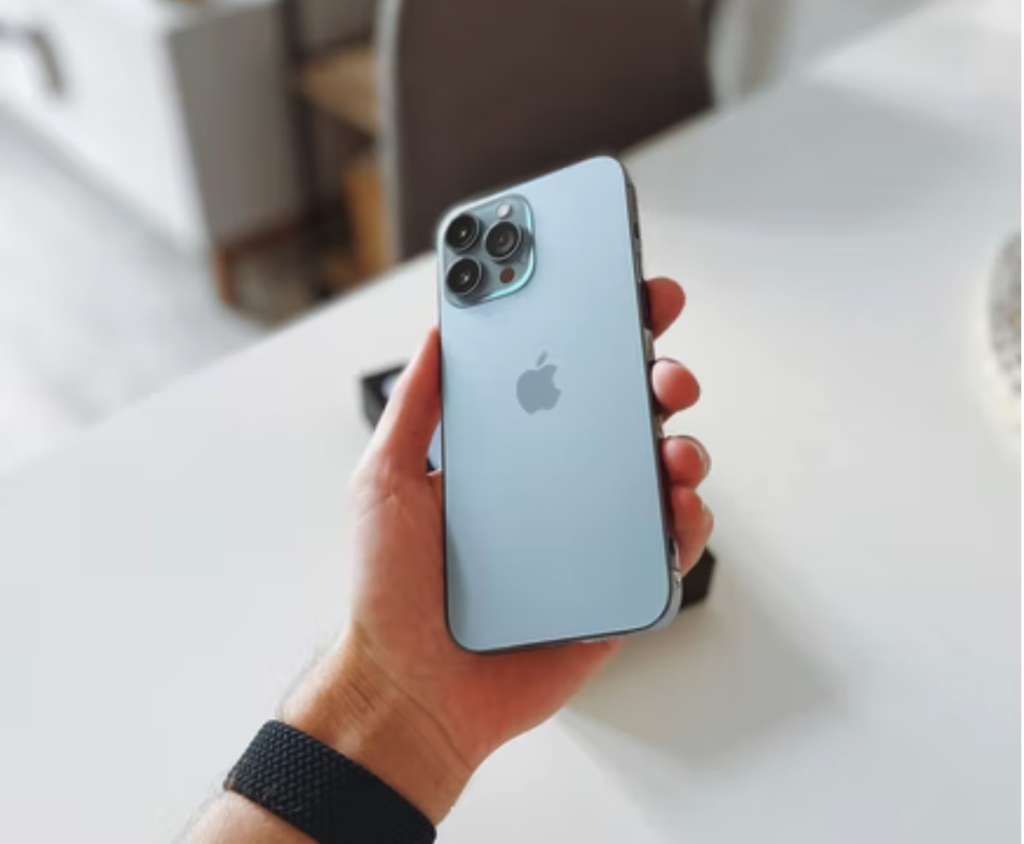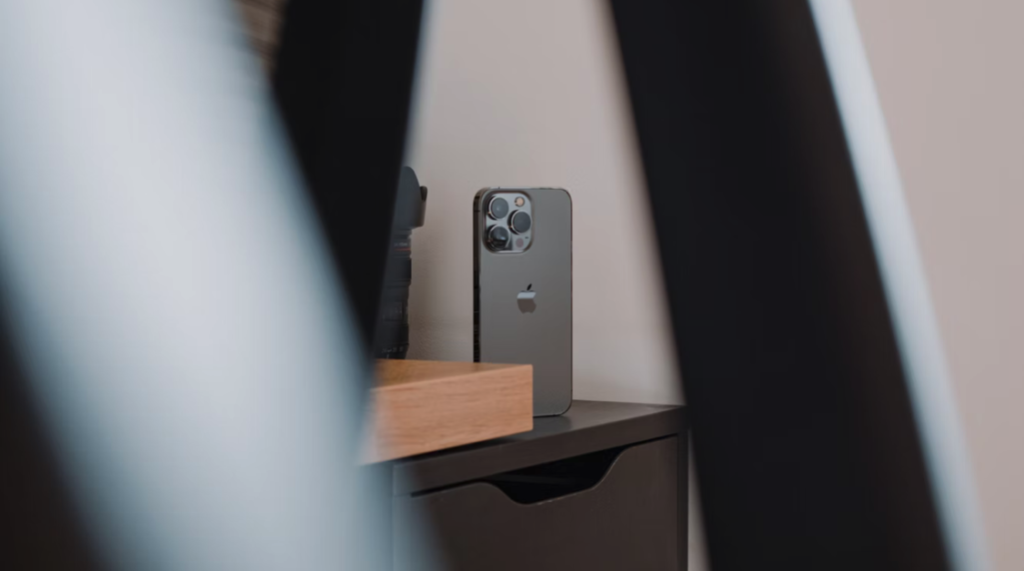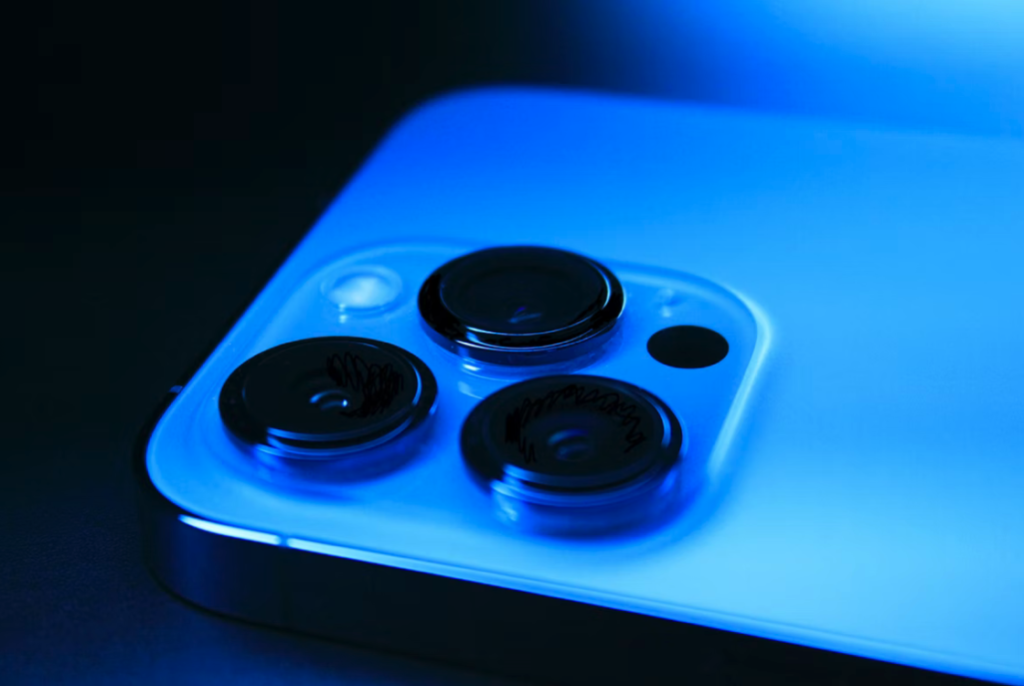The iPhone 13 Pro camera appears to be similar to its predecessor at first glance, however this is merely a superficial comparison. In fact, the iPhone 13 Pro improves the camera in practically every way. The modules now include a bigger aperture, improved stabilisation, an even wider ultra-wide-angle module, a cinematic effect mode, photographic styles, and, ultimately, ProRes 10-bit video for the first time.
So is the iPhone 13 Pro just an evolution or a revolution in mobile photography? Let’s figure it out.

Main features
Primary wide-angle camera: 12 MP, ƒ/1.6, optical zoom 2x, digital zoom 5x
Ultra wide camera: 12MP, ƒ/2.4, 120° field of view
Front camera: 12MP, ƒ/2.2
As I said, the new product uses sensors with larger matrices. In practice, this means that they capture more light and perform better in low light conditions.
If we compare the new model with the iPhone 12, then the simplest answer to the question “how do the 13 Pro and 13 Pro Max shoot” will be “slightly different than the 12 Pro or 12 Pro Max.” Apple tweaked the color temperature and black point. This is especially noticeable with skin tone and pictures taken using the night mode.
While portraits used to come out very warm, now the iPhone 13 Pro or 13 Pro Max camera tends to capture a natural skin tone. But color rendering is an extremely subjective indicator. Some will say that this is awesome while others will simply hate this.
Nevertheless, now you can take pictures for ecommerce websites that will convey the most realistic state of affairs. You can then upload pics into the background remover tool and save on professional commercial photography.
Telephoto camera
The iPhone 13 received a telephoto camera with a lens with an equivalent focal length of 77 mm. This means that less information will be placed in the frame, and the objects that enter the frame will be more densely “collected”, which will create more dynamics. Also, 77 mm is the “gold standard” of focal lengths for portrait lenses.
Ultra wide camera
Apple has significantly changed the optical system of the ultra wide-angle camera. Pro models now have more lenses: not five, but six. More lenses – better pictures. The lens aperture has also been increased from f/2.4 to f/1.8.
Moreover, developers added autofocus to the camera. This will allow you to take macro shots.

Stabilization
Another innovation in the iPhone 13: a matrix-shift optical stabilization system. It works on both cameras and allows you to make videos smoother even when shooting handheld.
Cinematic effect
The iPhone 13 recognizes people in the frame and automatically focuses on them, shifting focus between the characters in the video. The background is blurred. Sharpness can be adjusted both during recording and after saving the video – in the built-in editor.
In the “Cinema Effect” mode, videos are recorded in 1080p resolution at 30 fps. But like past models, the iPhone 13 can also record 4K video at up to 60 frames per second. When shooting, HDR10 and HDR Dolby Vision are supported.
Photographic styles
For portraits, a new mode has appeared – “Photographic styles”. It can be opened by swiping up in the camera app and tapping on the icon with three squares. These are a kind of smart filter in which it is convenient to change the tone and temperature of different areas of the frame. For example, when photographing people, photographic styles do not change skin tone, but act on the surrounding space.
The TrueDepth front camera also supports Cinematic Effect, Photo Styles, HDR Dolby Vision, and Portrait Mode with lighting settings.

Outcome
Apple has released new iPhones, placing a lot of emphasis on the camera presentation. Many will say that the difference is almost imperceptible. On the one hand, this is true: the quality has increased, but you can only notice this if you compare the pixels and delve into the details.
On the other hand, this is a normal practice: progress doesn’t stand still, but it’s difficult to notice it. We are approaching the physical limitation caused by the size of smartphones: it is no longer possible to make the quality much better in hardware. Matrices for thin devices have already become very large. If we make even more of them, then we will get limitations in the focal length at the level of the equivalent of 19–20 mm, as well as in the number of lenses, reducing the number of which we will get an image of far from the best quality.
Therefore, all the most significant improvements are in the matrix stub, optical zoom and improved ultra-wide-angle camera. After a while, most likely, Apple software will improve the quality of photos and videos a little more. And the difference between devices will be even more noticeable.
